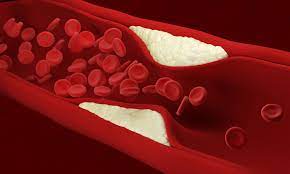
Breaking News
 FULL REPLAY: President Trump Delivers an Address to the Nation - 12/17/25
FULL REPLAY: President Trump Delivers an Address to the Nation - 12/17/25
 MELANIA, the film, exclusively in theaters worldwide on January 30th, 2026.
MELANIA, the film, exclusively in theaters worldwide on January 30th, 2026.
Top Tech News
 This tiny dev board is packed with features for ambitious makers
This tiny dev board is packed with features for ambitious makers
 Scientists Discover Gel to Regrow Tooth Enamel
Scientists Discover Gel to Regrow Tooth Enamel
 Vitamin C and Dandelion Root Killing Cancer Cells -- as Former CDC Director Calls for COVID-19...
Vitamin C and Dandelion Root Killing Cancer Cells -- as Former CDC Director Calls for COVID-19...
 Galactic Brain: US firm plans space-based data centers, power grid to challenge China
Galactic Brain: US firm plans space-based data centers, power grid to challenge China
 A microbial cleanup for glyphosate just earned a patent. Here's why that matters
A microbial cleanup for glyphosate just earned a patent. Here's why that matters
 Japan Breaks Internet Speed Record with 5 Million Times Faster Data Transfer
Japan Breaks Internet Speed Record with 5 Million Times Faster Data Transfer
 Advanced Propulsion Resources Part 1 of 2
Advanced Propulsion Resources Part 1 of 2
 PulsarFusion a forward-thinking UK aerospace company, is pushing the boundaries of space travel...
PulsarFusion a forward-thinking UK aerospace company, is pushing the boundaries of space travel...
 Dinky little laser box throws big-screen entertainment from inches away
Dinky little laser box throws big-screen entertainment from inches away
 'World's first' sodium-ion flashlight shines bright even at -40 ºF
'World's first' sodium-ion flashlight shines bright even at -40 ºF
Lasers and ultrasound combine to pulverize arterial plaque

By bringing ultrasound into the mix, scientists at the University of Kansas have demonstrated a new take on this treatment that relies on exploding microbubbles to destroy plaque with greater safety and efficiency, while hinting at some unique long-term advantages.
The novel ultrasound-assisted laser technique builds off what's known as laser angioplasty, an existing treatment designed to improve blood flow in patients suffering from plaque buildup that narrows the arteries. Where more conventional treatments such as stents and balloon angioplasty expand the artery and compress the plaque, laser angioplasty destroys it to eliminate the blockage.
The laser is inserted into the artery with a catheter, and the thermal energy it generates turns water in the artery into a vapor bubble that expands, collapses and breaks up the plaque. Because this technique calls for high-power lasers, it has the potential to perforate or dissect the artery, something the scientists are looking to avoid by using low-power lasers instead.
They were able to do so in pork belly samples and ex vivo samples of artery plaque with the help of ultrasound. The method uses a low-power nanosecond pulsed laser to generate microbubbles, and applying ultrasound to the artery then causes these microbubbles to expand, collapse and disrupt the plaque.

 The Prime Directive is Evil
The Prime Directive is Evil
 Don't Worry About Bitcoin
Don't Worry About Bitcoin

